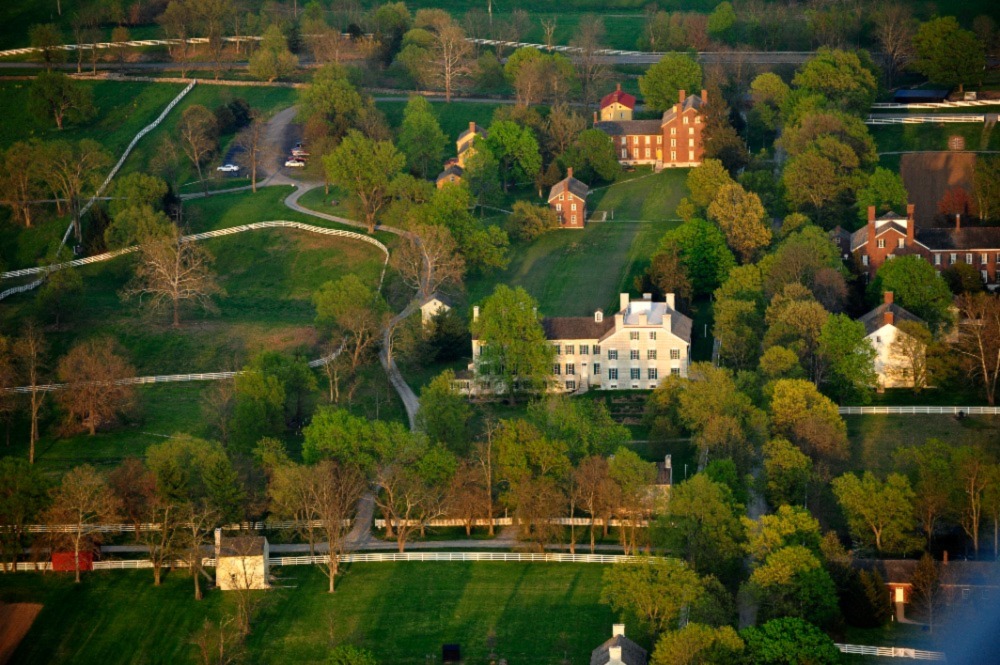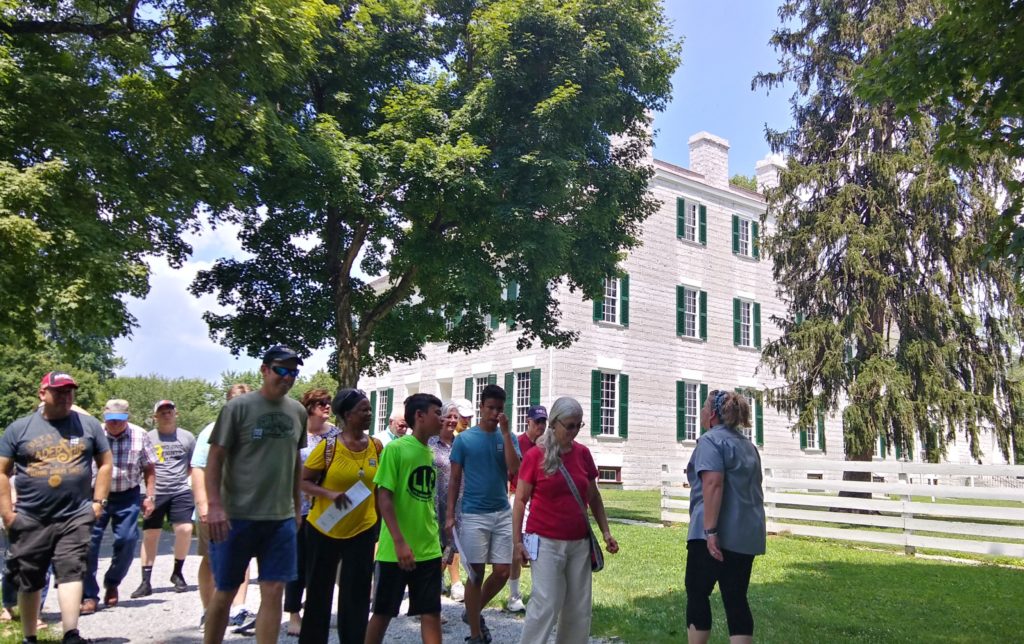Billy Rankin, Vice President of Public Programming and Marketing
“In the end, our society will be defined not only by what we create, but by what we refuse to destroy.” -John Sawhill
For more than 60 years, our nonprofit organization has been on a mission to preserve the buildings and property that belonged to the Shakers of Pleasant Hill, and to share this unique historic landscape with the public. This mission has not been achieved without struggle. Preserving a historic place presents many challenges, and doing it while also hosting 100,000 visitors each year can be quite a juggling act!

Although we have developed a sustainable, nonprofit model to support the preservation of Pleasant Hill, we are fortunate the National Historic Preservation Act of 1966 (NHPA) was passed early in our organization’s history. The layers of protection and support this legislation, and its later amendments, has offered historic properties like Shaker Village cannot be overstated. As Preservation Month comes to a close, it seems appropriate to take a moment to reflect on some of the designations this legislation provided that have impacted our mission.
The National Register of
Historic Places
The NHPA legislated the creation of the National Register of Historic Places. Designation on this list provides national recognition to a historic property, even if the scope of its story may be deemed to be local or regional. Listing on the National Register can provide certain federal incentives, though it doesn’t inherently protect a property or building from alterations, or even demolition.

There are currently 95,000 properties listed on the National Register, with over 1.4 million individual historic resources identified on those properties. You can search the National Register Database here.
While Shaker Village of Pleasant Hill is listed on the National Register of Historic Places, when our organization was added in 1971 we were also made part of a much more exclusive club…
National Historic Landmarks
National Historic Landmarks (NHLs) are properties that have national historic significance. These properties have exceptional value, or quality, and represent a special category of designated historic structures.
There are currently just over 2,600 NHLs in the country (32 in Kentucky) representing less than 3% of National Register properties. Other NHLs include places like Mount Vernon, Alcatraz, Pearl Harbor and Graceland. Search for National Historic Landmarks here.

While, similar to the National Register listing, being an NHL doesn’t necessarily protect a property from alterations, or even demolition, the listing does create a buffer against a number of state and federal intrusions. It also creates an increased awareness of the property’s value to our nation’s cultural history.
The nomination process for both the National Register and to become an NHL can be extensive. In 1971 Shaker Village’s full nomination totaled 360 pages! A few dozen of those pages were photos, but still, wow! Nominations are archived online, so if you have some time on your hands it’s interesting, and inspirational to read Shaker Village’s nomination form. So many people have given so much of their time and talent so that this incredible place can be passed on from generation to generation. It’s almost overwhelming to think about.
This Place Matters
At the beginning of this post, I mentioned the “juggling act” that can take place when trying to balance preservation and public access. There’s no doubt that visitor usage can add wear and tear to any property, particularly historic properties. But, we must always remember why we preserve this history. If we don’t share the story Pleasant Hill has to tell, we aren’t accomplishing our full mission. And if we don’t inspire future generations with this story, then who will care about Pleasant Hill when we are gone?

Ultimately, while national designations and legislation can provide layers of protection, the preservation of our historic places is an action undertaken by us every day. It must be undertaken relentlessly and with enthusiasm, because once a place like Pleasant Hill is lost, it can never be replaced.
So, as Preservation Month comes to a close, we thank all of our guests, hikers, diners, shoppers, donors, sponsors, vendors, staff and volunteers for helping to preserve Kentucky’s largest National Historic Landmark, each in your own way.
Learn more about how you can support Shaker Village of Pleasant Hill.
Bibliography
Tyler, Norman, Ted J. Ligibel, and Ilene R. Tyler. Historic Preservation, 2nd ed. New York: W.W. Norton & Company, 2009.





